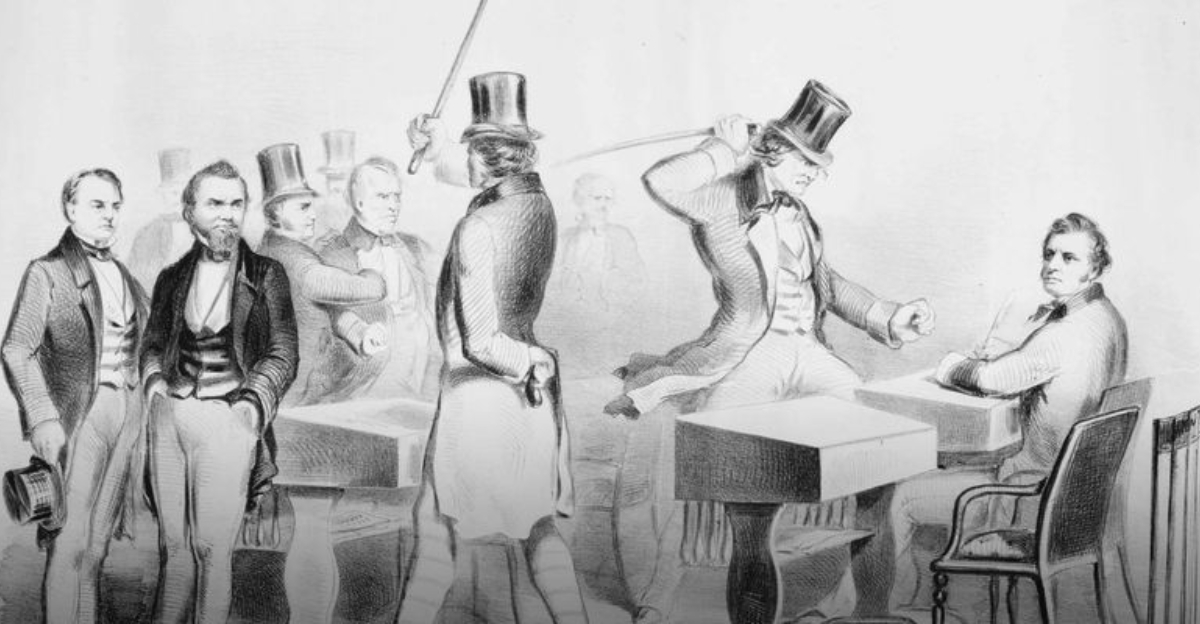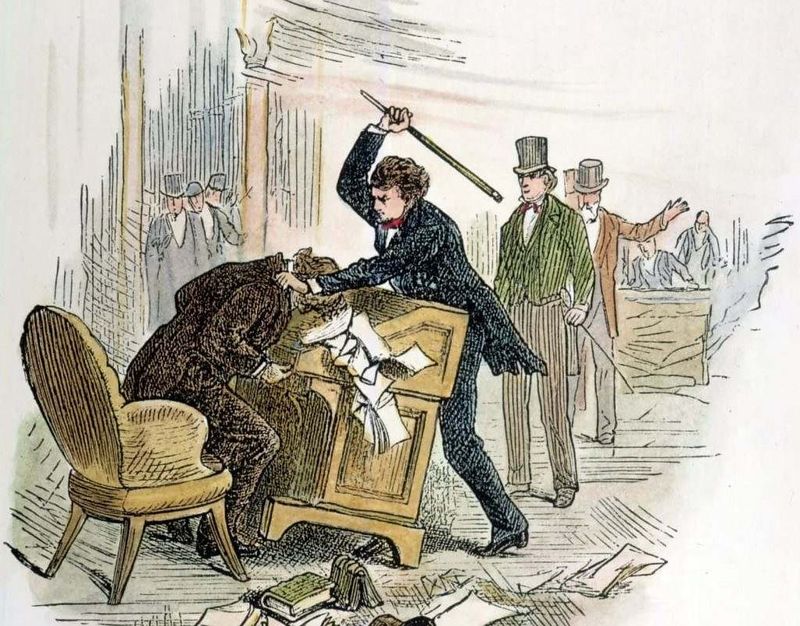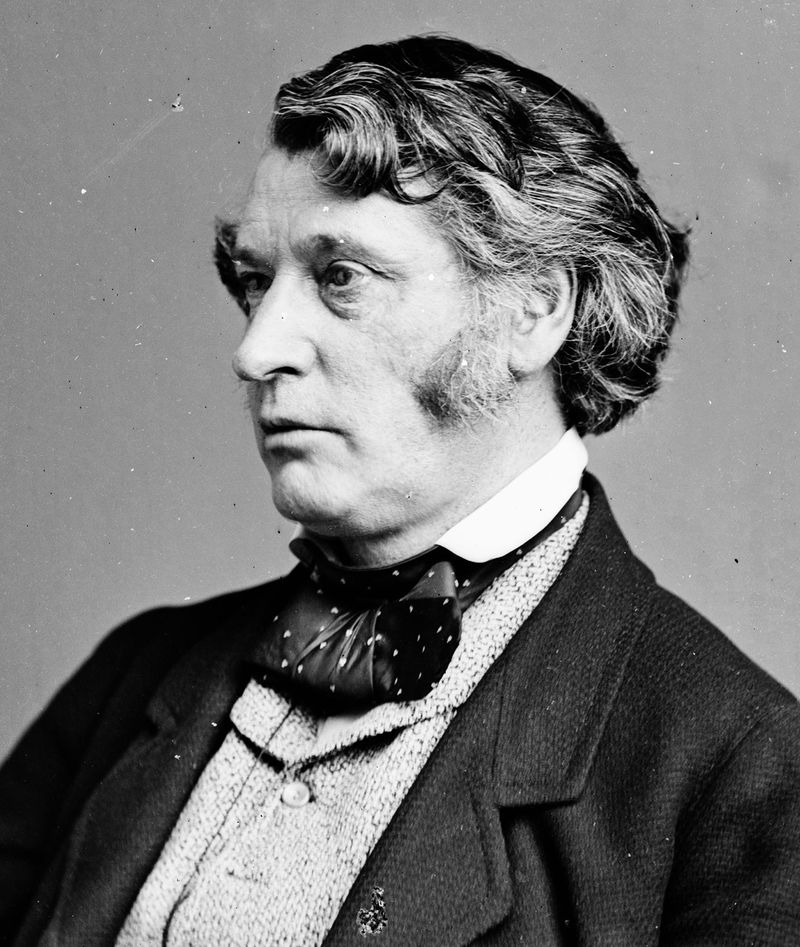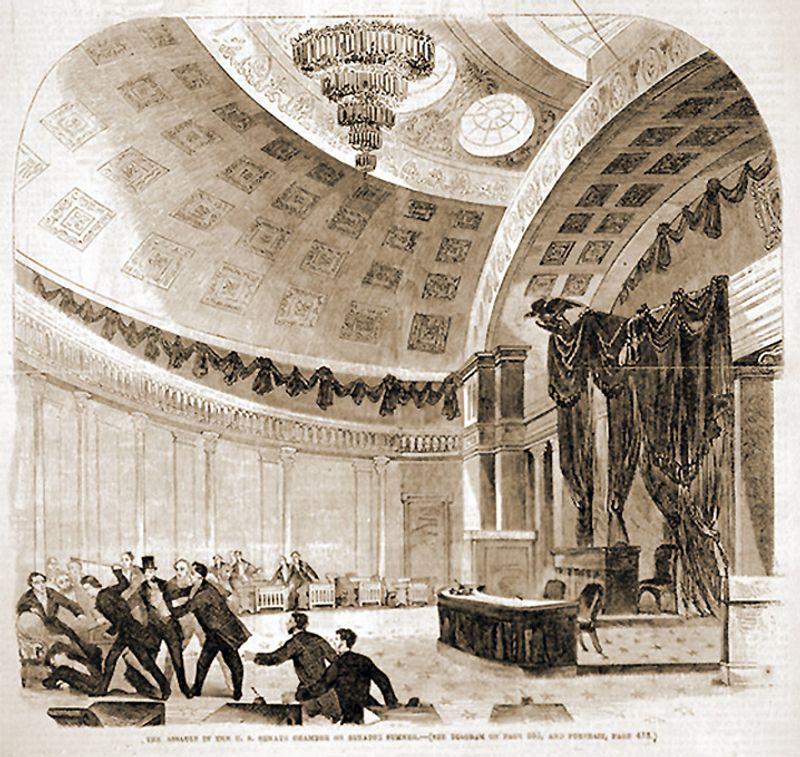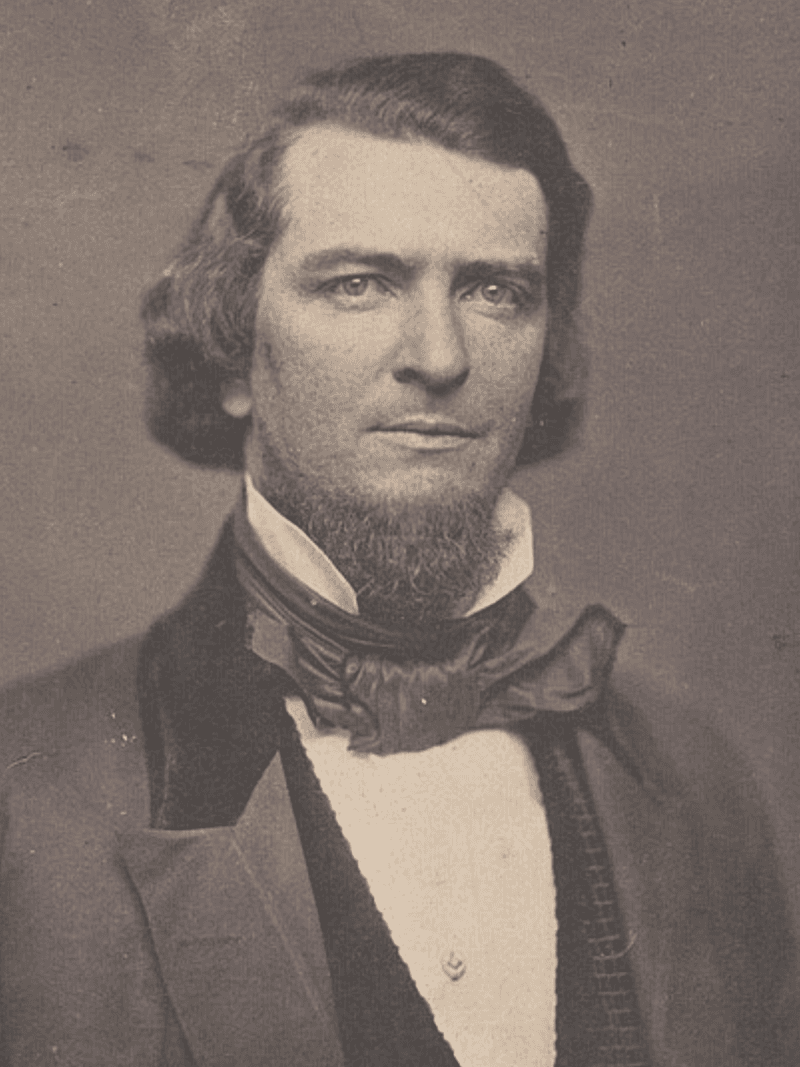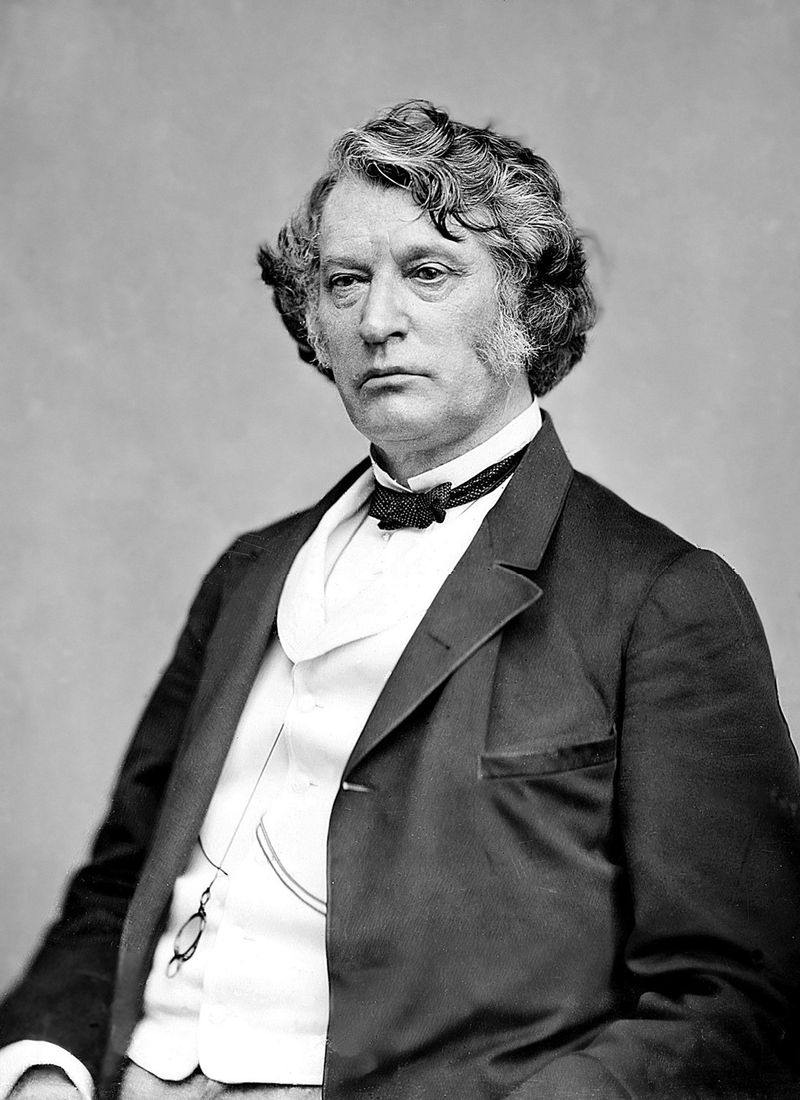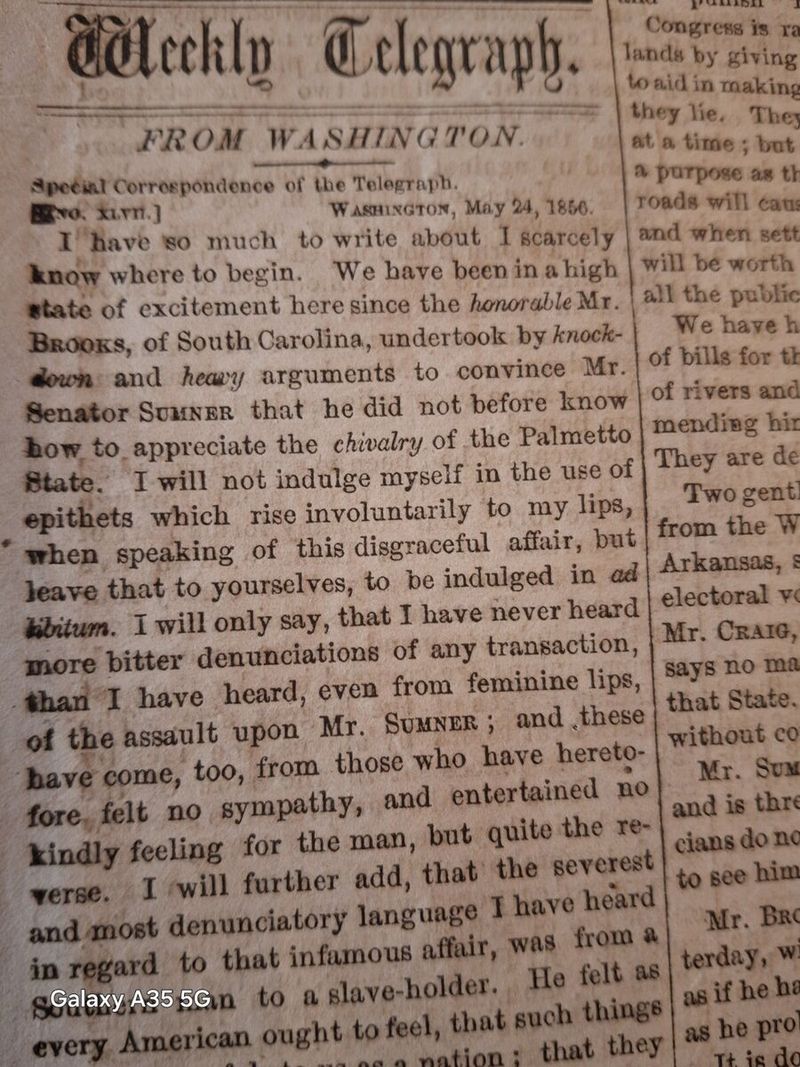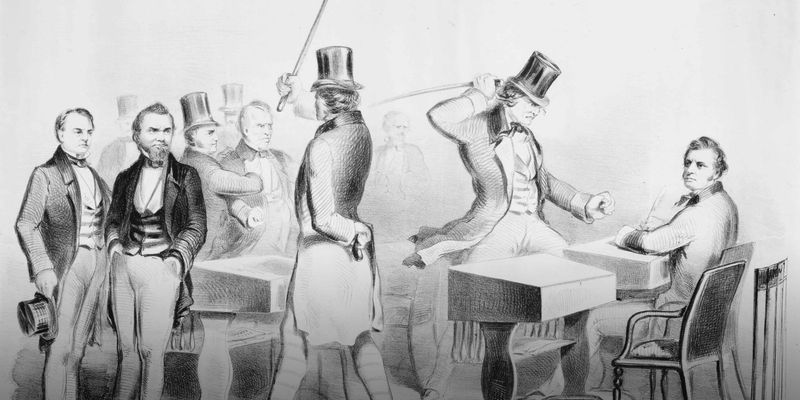In 1856, an act of violence rocked the foundations of American democracy. Massachusetts Senator Charles Sumner was brutally attacked in the Senate chamber by Congressman Preston Brooks of South Carolina.
This wasn’t just a scuffle between politicians – it was a shocking assault that left a man near death and a nation divided even further on the path to Civil War.
1. A Vicious Attack on Democracy’s Floor
Blood splattered across official Senate documents as Preston Brooks unleashed his fury on Charles Sumner. The South Carolina congressman didn’t challenge Sumner to a duel or debate – he ambushed him at his desk while Sumner was writing letters. Brooks struck over 30 brutal blows with a gold-headed walking cane, continuing even after the cane splintered into pieces. Several senators witnessed the assault but hesitated to intervene because Brooks had positioned himself where Sumner couldn’t escape. When the beating finally ended, Sumner collapsed unconscious, his clothing soaked with blood. The Senate floor – meant for debate and legislation – had become the scene of attempted murder.
2. Words That Triggered Violence
Senator Sumner’s fiery “Crime Against Kansas” speech didn’t just criticize slavery – it humiliated specific Southern politicians. He compared Senator Andrew Butler of South Carolina to Don Quixote, claiming Butler had taken “the harlot, Slavery” as his mistress. The deeply personal insults violated the gentlemanly code of congressional discourse. Brooks, as Butler’s cousin, considered the speech an attack on family honor that demanded physical retaliation rather than a verbal response. Northern newspapers had celebrated Sumner’s oratory brilliance, unaware that his words would trigger one of the most infamous acts of political violence in American history.
3. Bystanders Frozen in Shock
“For God’s sake, stop!” shouted one congressman as the attack unfolded, yet no one physically intervened. Several Northern senators later claimed they tried to help but were blocked by Brooks’ accomplices who stood guard with weapons. Representative Laurence Keitt of South Carolina brandished a pistol and cane at anyone who might interfere, shouting “Let them alone!” This wasn’t just Brooks acting alone – it was a coordinated assault. The Senate chamber fell into chaos as some men froze in horror while others scrambled to escape. Only after Sumner collapsed unconscious did Brooks calmly walk away, leaving behind a bloody scene that would forever stain American political history.
4. A Hero’s Welcome in the South
Southern newspapers transformed Brooks into an instant celebrity. The Richmond Enquirer proclaimed: “We consider the act good in conception, better in execution, and best of all in consequences.” Admirers sent dozens of replacement canes, many inscribed with phrases like “Hit Him Again!” and “Use Knock-Down Arguments!” One gold-headed cane bore the inscription: “To P.S. Brooks, who courageously vindicated the honor of South Carolina.” Brooks resigned from Congress after a censure vote but was promptly reelected by his South Carolina district. His mailbox overflowed with congratulatory letters, while Southern ladies sent locks of hair to fashion into a victory ring.
5. The Long Road to Recovery
Sumner’s injuries went far beyond surface wounds. Doctors diagnosed him with psychosomatic shock and severe spinal trauma – what modern medicine would recognize as traumatic brain injury and post-traumatic stress disorder. For three years, his Senate seat remained symbolically empty. Massachusetts voters reelected him despite his absence, refusing to replace a man they viewed as a martyr to the abolitionist cause. Sumner’s treatment included experimental therapies like fire-cupping and electric shock. He traveled to Europe seeking specialists who might help him recover. When he finally returned to the Senate in 1859, he was a changed man – physically diminished but more radically committed than ever to ending slavery.
6. The Match That Lit Civil War’s Fuse
Newspapers across America splashed the bloody attack across their front pages. “SUMNER BEATEN NEARLY TO DEATH!” screamed Northern headlines, while Southern papers celebrated Brooks’ “chivalrous conduct.” The caning transformed abstract political disagreements into visceral hatred. Moderate voices were drowned out as thousands of Northerners who had been indifferent to slavery now joined abolitionist groups. Meanwhile, Southerners doubled down on defending their “way of life.” Abraham Lincoln later remarked that the attack had done more to polarize the nation than any speech could have. Within five years of the caning, seven Southern states had seceded, and Americans were killing each other on Civil War battlefields.
7. Democracy’s Dangerous Warning
The empty seat in the Senate chamber became a powerful symbol. Northern schoolchildren learned about “Bleeding Sumner” alongside “Bleeding Kansas” – twin examples of Southern violence against freedom. Modern historians point to the caning as a crucial moment when American democracy nearly collapsed. When words failed and violence became acceptable political expression, the foundation of representative government cracked. The incident remains a cautionary tale taught in civics classes today. When political opponents become mortal enemies rather than fellow citizens with different views, democracy itself is at risk. The bloodstained Senate floor of 1856 stands as a stark reminder of how quickly political passion can transform into violence.
